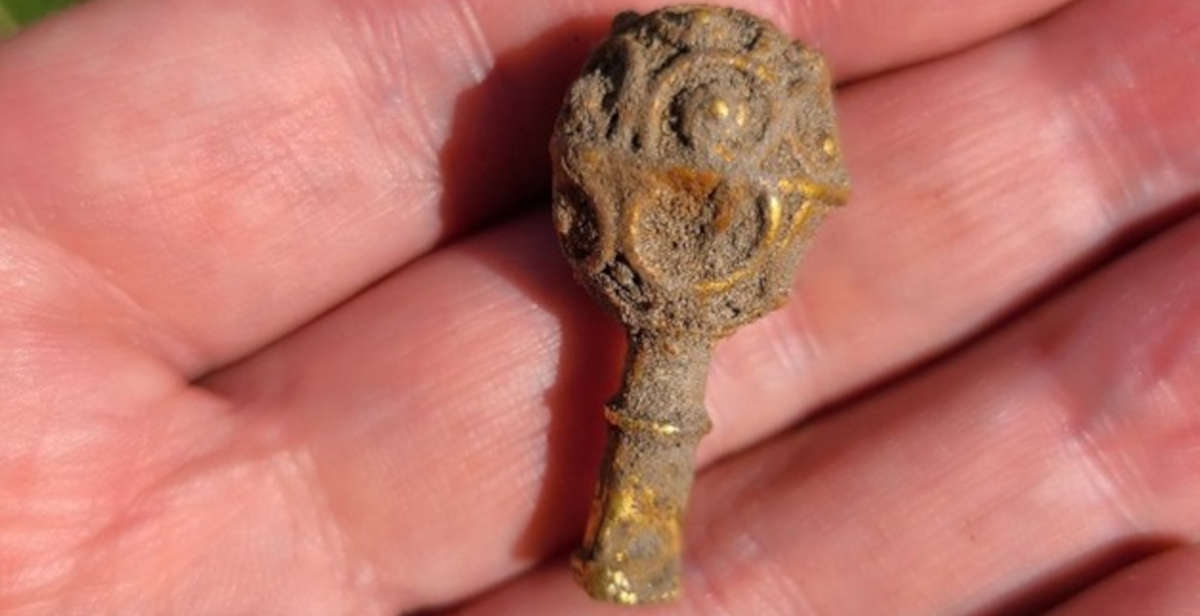A rare 9th-century gold object discovered at an archaeological dig in Northumberland, England: the author of the important discovery? A student on her first dig. This is the curious story that comes from Redesdale, a locality some 40 kilometers from Newcastle, where Yara Souza, originally from Orlando (Florida, United States) was participating in her first excavation with heruniversity, theUniversity of Newcastle, at a site where the institution decided to conduct some analyses after a metal detector enthusiast, Alan Gray, discovered a piece similar to the one Souza found in 2021, by pure chance. The young woman was working together with her fellow Bachelor of Archaeology students and professional archaeologists from the North East Museums to further investigate the site.
The find dates back to July 2025 (the news, however, was not announced by Newcastle University until Aug. 11), and Yara Souza, who had to drop out of Newcastle University’s excavations at the Birdoswald Roman fort with Historic England last year due to illness, made the discovery within the first 90 minutes of fieldwork. “I couldn’t believe I found something so extraordinary so quickly on my first dig ever,” he said. “It was really overwhelming. After having to skip Birdoswald last year, it was amazing to discover something that hadn’t been seen in over a thousand years-I was really excited about it!”
It is not clear what the found object is. The place where the two pieces were found is near the route of Dere Street, an important Roman-era road that connected York and Edinburgh and continued to be used long after the fall of the Roman Empire, eventually becoming part of today’s A68 highway. The find is an object about four inches long and has a decorative pinnacle at one end. Gold was a high-ranking commodity and was used only by the elite, and since Dere Street connected two important religious centers, Jedburgh and Hexham, experts involved in the excavation believe that the two objects, the one discovered in 2021 and the one found now, may have had a religious or ceremonial use.

Professor James Gerrard, professor of Roman archaeology at Newcastle University and Yara’s mentor, said, “This is an exciting discovery of exceptional quality and I am delighted for Yara that she made this discovery early in her career as an archaeologist. We know that Dere Street continued to be an important thoroughfare long after the end of Roman times, and it is clear from this discovery that it was used by people of high rank. It is possible that this pair of objects was buried deliberately.” The two objects will be further analyzed and it is hoped that they will eventually be displayed at the Great North Museum Hancock in Newcastle.
Andrew Agate, head of finds for Northeast England in the Portable Antiquities Scheme of the Great North Museum, said, “This project is an excellent example of how metal detectorists and archaeologists can work together to enrich our understanding of Northumberland’s past. Being able to work closely with Newcastle University and the Great North Museum has allowed us to train students in archaeological techniques while investigating the context of these important early medieval finds.”
The Archaeology degree programs at Newcastle University are known for offering numerous fieldwork opportunities and are officially accredited by the Chartered Institute for Archaeologists and University Archaeology UK (UAUK), which helps ensure that students graduate with the practical skills required by employers.
 |
| England, student on her first archaeological dig discovers rare 9th century object |
Warning: the translation into English of the original Italian article was created using automatic tools. We undertake to review all articles, but we do not guarantee the total absence of inaccuracies in the translation due to the program. You can find the original by clicking on the ITA button. If you find any mistake,please contact us.